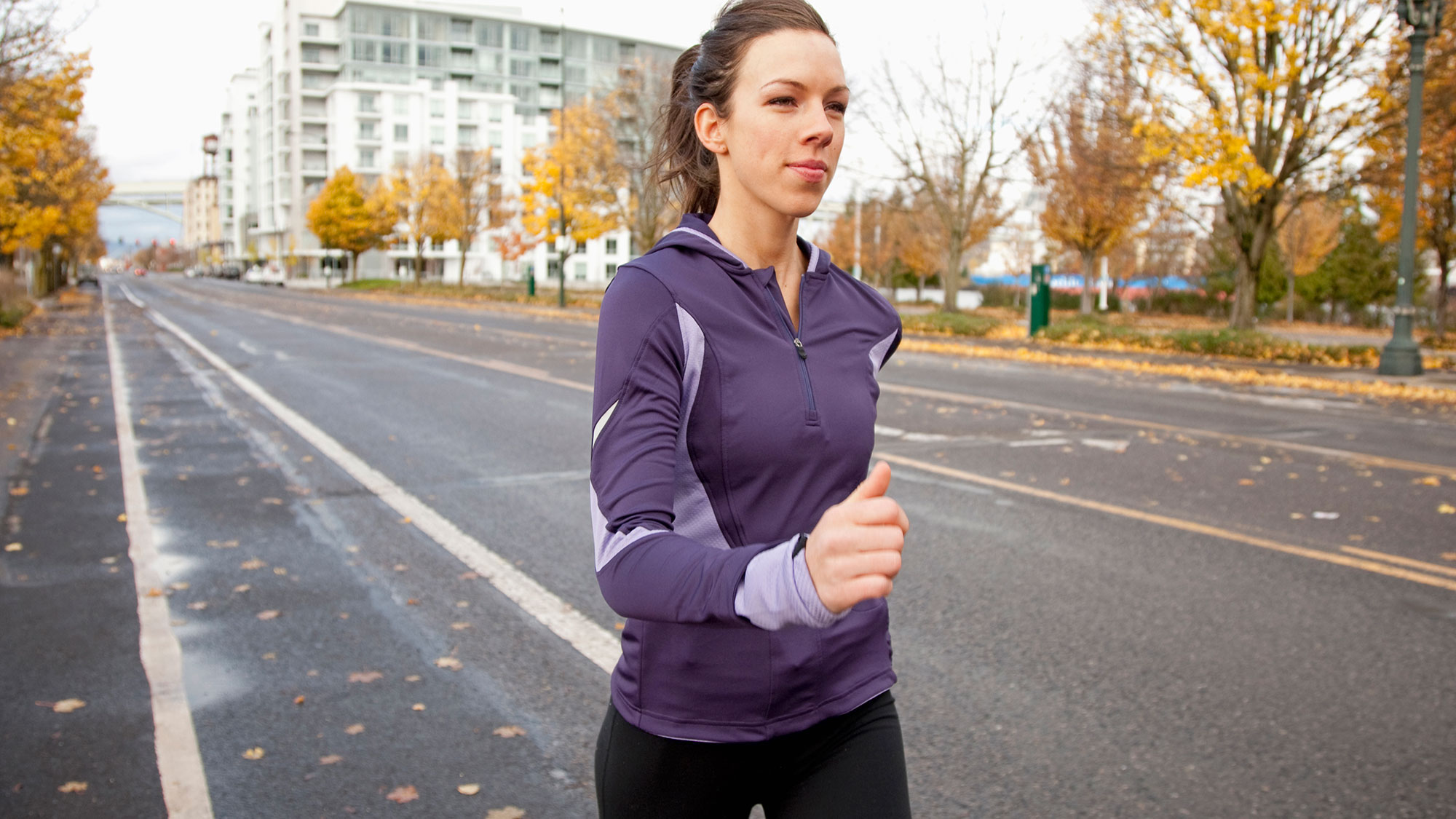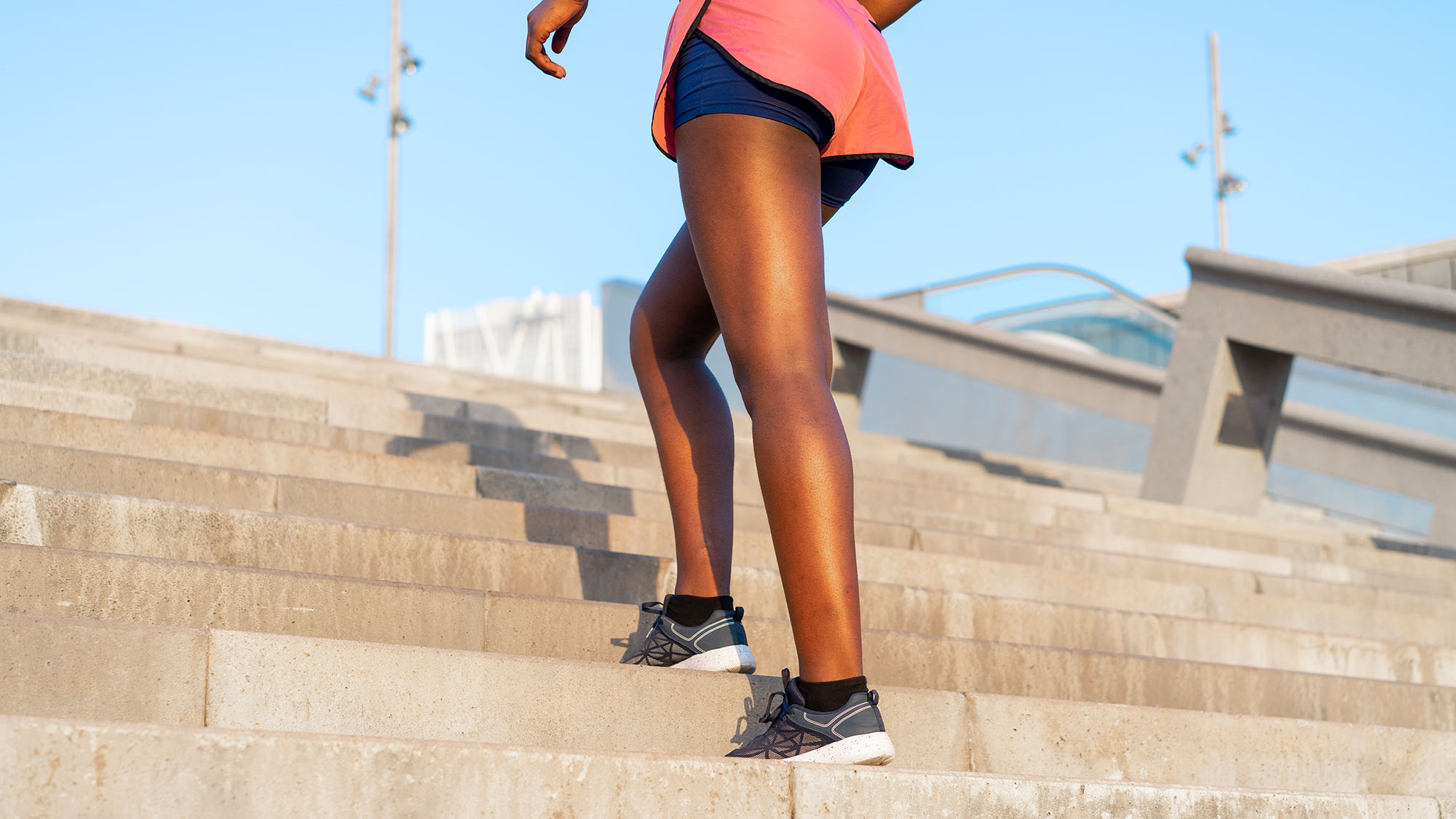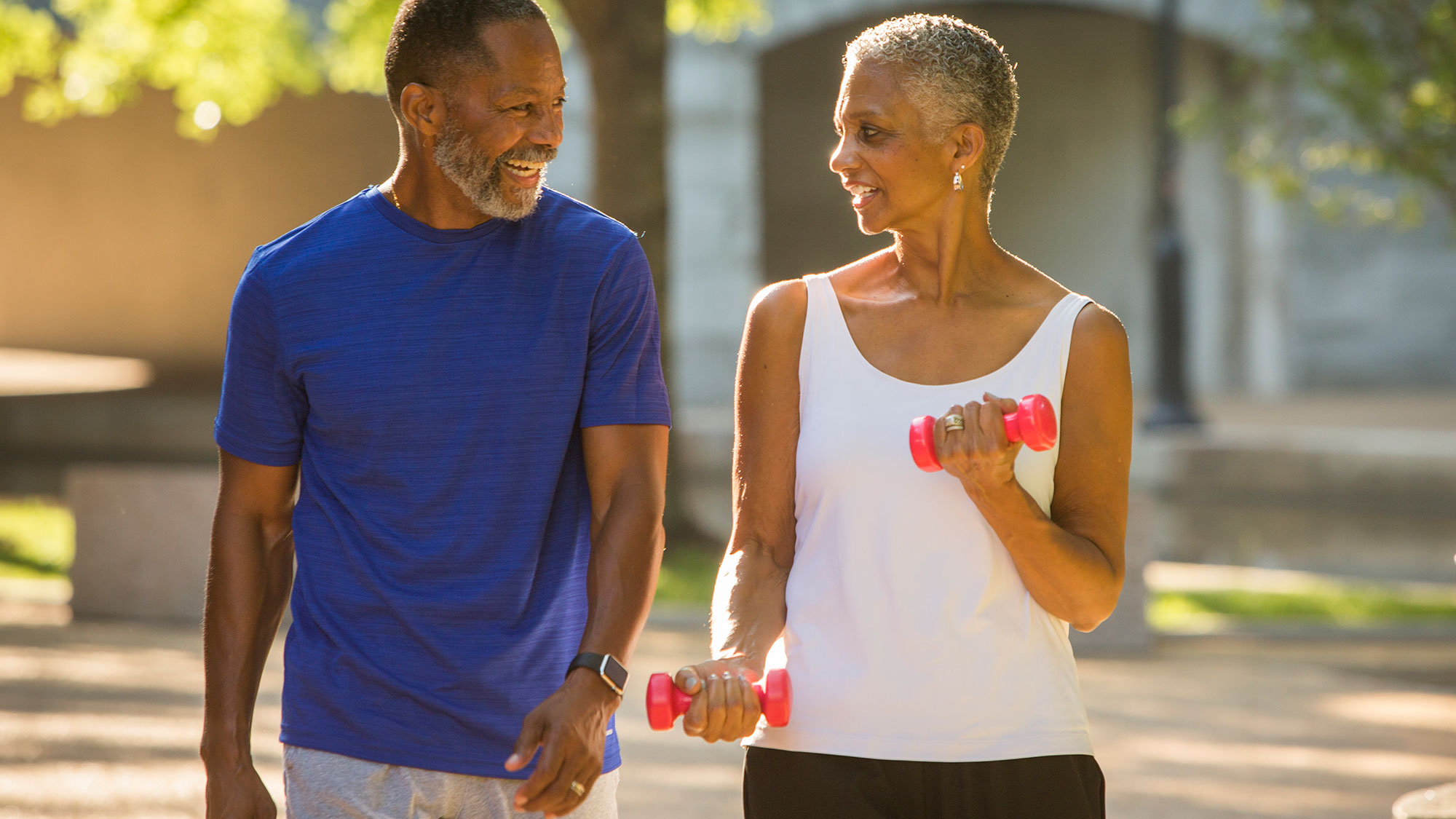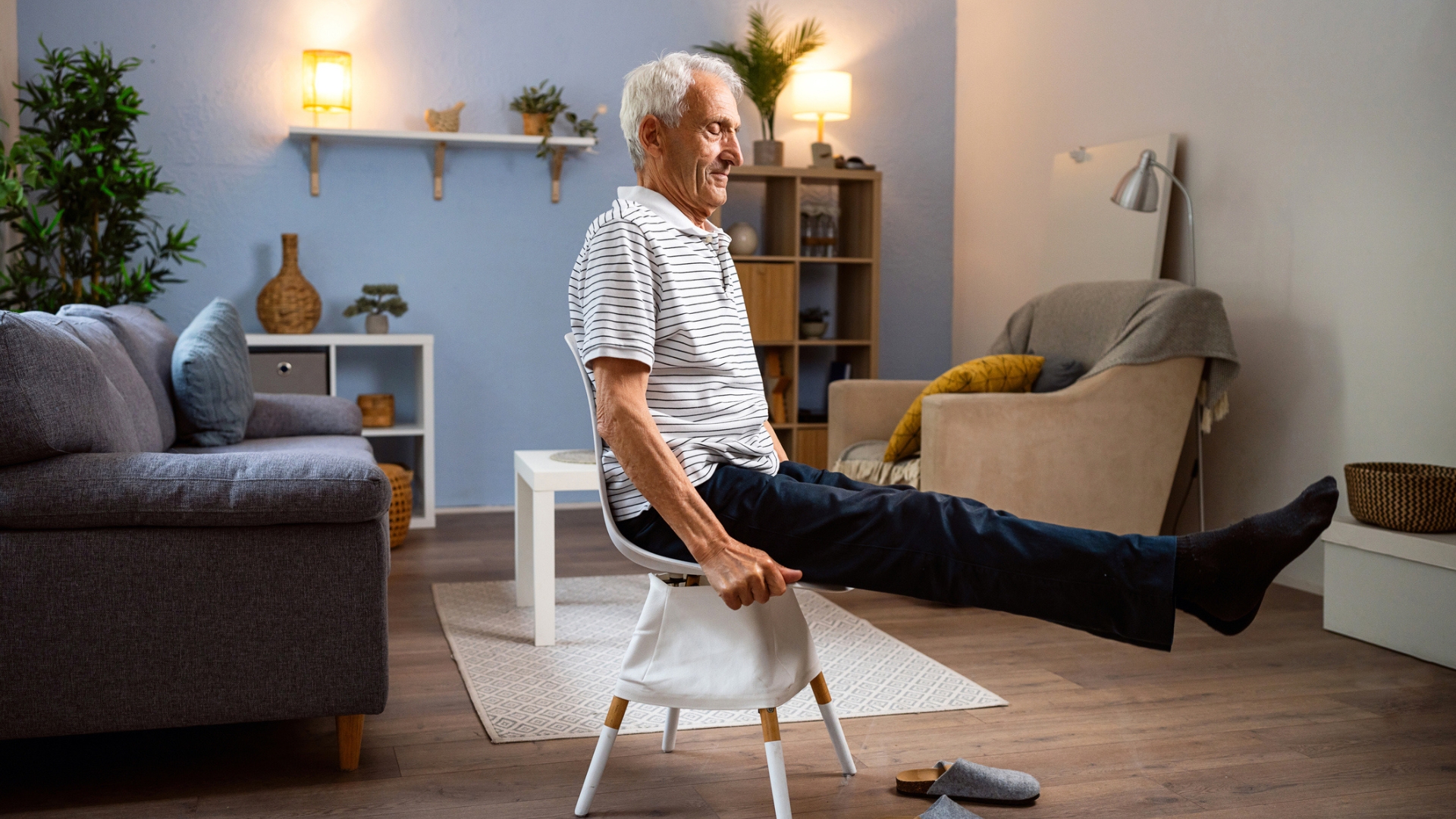9 easy ways to turn your walks into a workout
Whether you’re walking to lose weight or just want to ramp up your exercise routine, here’s how you can turn your casual walks into a workout


While walking may not be the first thing that springs to mind when you think about working out, this humble form of exercise has got a whole lot going for it.
Walking is free, easy, and suitable for everyone regardless of age or fitness level. Plus if you're trying to shed some pounds, walking to lose weight can be a good place to start.
Just a few simple tweaks to your daily walk could also help you meet the 150-300 minutes per week of moderate-intensity exercise that the World Health Organization recommends for adults.
We spoke to award-winning personal trainer Laura Uglow, and Steven Virtue, Fitness Development Manager at Total Fitness, to get their top tips on how you can turn casual walks into a heart-pumping workout.
Before you start, take a moment to check your posture. While it may seem like a strange thing to do, walking with the correct posture can help prevent back pain, muscle aches, and reduce your risk of injury - helping to keep your goals on track.
If you’re not sure what the right posture is or how to get into it, Laura has you covered: ‘Loosen your shoulders by doing a couple of shoulder rolls forward and backward, do a shrug to ensure your neck and shoulders are relaxed and your chest is open, and check in that your feet are pointing straight and not turning in or outwards too much to avoid any excess strain in your hips or your knees’.
Ready to get going? Check out our top walking workout tips below.
Start your week with achievable workout ideas, health tips and wellbeing advice in your inbox.
1. Dress the part
While you don’t need to be spending lots of money on expensive exercise gear, putting some thought into what you wear can help shift your mind into workout mode. Studies show that what we wear can influence our behavior, with dressing in athletic clothing increasing the likelihood that you’ll exercise.
Opt for moisture-wicking material in the summer to keep you cool and in the winter, choose a base layer, insulating layer, and an outer shell that repels rain and snow. When it comes to your feet, keep them cushioned and supported in a pair of the best shoes for walking.
2. Mix it up with interval training
Interval training - mixing short bursts of intense activity with longer and slower periods of recovery - can be a great way to burn fat, build muscle, and give your heart health a boost.
Studies have shown that interval walking programs can significantly improve aerobic fitness, leg strength, and blood pressure readings, and carry a low risk for everyone regardless of age or lifestyle-related diseases.
New to interval training? No worries. ‘Try walking at a moderate pace for 3 minutes, then speed up at a faster than normal pace for 2 minutes, alternating for 30-45 minutes’ says Laura. 'You can keep this interval at a fast power walk, or you can jog during your faster interval.’
3. Add an incline

One of the simplest and most effective ways to intensify your walks is to vary the terrain you explore - so hunt out hills or steps you can walk up on your walking route.
‘An inclined walk will really put your lower body muscles to the test, building strength in your glutes, quadriceps, and hamstrings,’ Steven shares. And if you think it’s only your lower body that will benefit from climbing hills and stairs, think again.
‘Dynamic inclines and declines will also engage your core and improve your balance,’ advises Steven, who adds that exercises that strengthen your core can also aid good posture during long hours spent sitting at a desk.
4. Swing your arms
While it may sound silly, swinging your arms while you walk can up the intensity of your workout. ‘By using the correct powerful arm motion in your power walks, it can help you to walk faster and keep you in the fat burning zone for longer’ says Laura.
It turns out that not all arm swinging is created equal though. Getting the technique right is important as unnatural movements can put pressure on your spine.
So, how do you make sure you’re doing it right? ‘Bend your elbows at 90 degrees, make sure your hands are relaxed and not clenched to reduce tightness through the neck and shoulders, and hold your elbows close to the body’ says Laura.
She adds: 'To keep the body in balance, try and use the right arm and leg first, and then the left, keep your hands low and don’t over exaggerate the movement as this will affect your posture.’
5. Pick up the pace
While a 30-minute walk will typically burn anywhere between 90-200 calories, a brisk pace will make sweat harder and push your body to burn more calories. Aim for a pace of 5.5 – 6.5 kph (3.5 – 4 mph), which means you'll need to average around 9 minutes per kilometer (or 15 minutes per mile).
To help you hit your pace, Steven suggests popping your earphones in and listening to upbeat music. Check out our list of the best workout music to add to your walking playlist.
For those who are less comfortable with cardio, Steven has a solution: ‘Why not gradually introduce short intervals of brisk walking or jogging to your walk? Not only will this add dynamism to your daily physical activity, but it’s also an easy way to build up your cardiovascular endurance.’
6. Add extra oomph with weights

Want to raise your heart rate and burn more fat? Increasing your weight and adding some resistance is the perfect way to do it.
‘Weighted vests or ankle weights are both great equipment to walk with,’ says Steven. ‘If you don’t have access to either of these, simply carrying a large water-bottle or backpack containing household items will help maximize the results of your walk.’
If you’re new to weighted walks, Steven suggests building up your strength slowly, increasing the weights at a rate that feels comfortable to you. ‘Be careful not to overdo it and put strain on your joints by starting slowly and increasing the amount of weight added both gradually and sensibly.’
A set of the best adjustable dumbbells could be beneficial in this respect, allowing you to up the weight as and when you feel ready to, and easy to grasp as you walk.
7. Get sculpting
Whether you’re looking to lose weight on your stomach, tone your legs, or shape your arms, interspersing your walk with sculpting exercises that target key areas can be a great way to amp up your workout.
'Walk at a moderate pace for four minutes and then stop and do a minute of squats, lunges, abdominal crunches, or squat jumps’ says Laura. Keep that going for 30-45 minutes on a regular basis, and you’ll be looking and feeling toned, strong, and vibrant before you know it.
8. Use technology to stay on track

Want to get the maximum workout benefits out of your walk and stay motivated all at the same time? Then why not consider investing in one of the best fitness trackers. These sleek and stylish bands can help you keep track of everything from your heart rate to the number of steps you’ve taken - and that all-important walking pace we discussed in point five.
A fitness tracker is a great way of monitoring your workouts, keeping an eye on your progress, and celebrating your health and fitness goals. In fact, research shows that fitness trackers, when coupled with positive feelings about physical fitness, can help you stick to your new exercise routine and keep you motivated over the long term.
9. Fit it in at home
If you’re not able to get outside or prefer not to walk in public places, there are plenty of ways you can incorporate walking into a home workout. Steven suggests making the most out of any outdoor space you have and walk laps around your garden to stimulate blood flow, stretch your muscles, and give your mental wellbeing a boost.
Too cold and wet outside? No problem. ‘Another great way to get walking at home is to do some stair shuttles - whether you prefer to walk or run, continuously going up and down the stairs is a surprisingly tiring workout and a perfect option for those in apartment complexes’, says Steven.
Alternatively, if you're serious about making walking a habit, you could consider investing in one of the best treadmills for your home.
Kathryn is a freelance health and wellness writer. She previously worked for 10 years as an educator in the health care industry before leaving to spend her days indulging her love of writing. An avid meditator and long-distance walker with a passion for mental and emotional wellbeing, she’s happiest when she’s surrounded by mountains and oceans. When not writing words or thinking about them while walking, she can usually be found brewing a cup of herbal tea from her vast collection or trying to figure out healthy ways of incorporating chocolate and peanut butter into almost every meal.
-
 Level up your core strength and stability with this five-move medicine ball finisher
Level up your core strength and stability with this five-move medicine ball finisherTry these exercises to improve your core stability and balance
-
 Stretching can be a powerful tool to help the over-60s feel their best—combat aches and pains with these five assisted stretches
Stretching can be a powerful tool to help the over-60s feel their best—combat aches and pains with these five assisted stretchesUse just a chair as your workout buddy for these exercises
